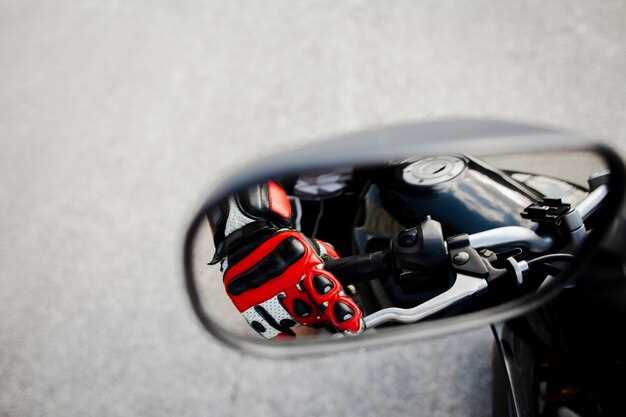
Motorcycles are a thrilling means of transportation, offering the freedom of the open road and an unparalleled sense of adventure. However, like any machine, they can encounter various problems that can disrupt your ride. Understanding the common issues that affect motorcycles can empower riders to addressing these challenges with confidence.
Whether you are a seasoned biker or a novice, knowing how to troubleshoot motorcycle problems is essential for ensuring your safety and enhancing your riding experience. From electrical failures to mechanical mishaps, many issues can be resolved with the right knowledge and tools. This guide aims to simplify the troubleshooting process, providing you with practical tips and insights.
As we delve into the specifics of motorcycle maintenance, we will highlight the most frequent problems that riders face, along with straightforward solutions. By learning to identify the signs of trouble early on, you can prevent minor issues from escalating into major repairs, ultimately saving both time and money. Get ready to become more proficient in caring for your motorcycle as we explore these essential troubleshooting techniques.
Diagnosing Starting Issues in Motorcycles

Starting problems in motorcycles are a common headache for riders. Identifying the root causes early can save time and prevent further complications. Begin by checking the battery condition. A weak or dead battery is frequently responsible for starting failures. Use a multimeter to measure the voltage; a healthy battery should read around 12.6 volts when fully charged.
If the battery is fine, inspect the electrical connections. Loose or corroded terminals can disrupt the power flow essential for starting. Ensure all connections are clean and tight. Additionally, verify the starter relay and ignition switch are functioning properly. Faulty components can prevent the electrical current from reaching the starter.
Next, examine the fuel system. Ensure there is adequate fuel in the tank, and check for clogged fuel lines or a malfunctioning fuel pump. A lack of fuel or poor delivery can hinder the engine from starting. Inspect the fuel filter as well; a blocked filter can restrict fuel flow.
Evaluate the spark plugs; they should be clean and free of deposits. Worn or fouled plugs can lead to ignition problems. Replace them if they appear damaged or discolored. Also, check the ignition coil for proper operation, as it provides the necessary voltage for the spark plugs to ignite the fuel-air mixture.
Lastly, consider engine conditions. Low oil levels or incorrect oil viscosity can impede engine performance. Ensure the engine has adequate lubrication to facilitate smooth operation. Remember that diagnosing starting issues requires a thorough assessment of multiple systems, and addressing these problems promptly will enhance the overall reliability of your motorcycle.
Identifying Electrical Failures and Solutions

Electrical problems are a common issue faced by motorcycle owners. Identifying these failures early can prevent more significant issues and ensure your ride remains reliable. Start by checking the battery, which is often the primary source of electrical issues. A weak or dead battery can lead to starting problems or inconsistent power supply. Use a multimeter to measure the voltage; a healthy battery should read around 12.6 volts when fully charged.
Next, inspect the wiring harness for any signs of damage, such as frayed wires or exposed connections. Corrosion at connectors can also lead to poor electrical flow. Clean any corroded areas with an appropriate cleaner and ensure connections are tight. Pay attention to grounding points, as insufficient grounding can cause erratic behavior in electrical components.
Another area to examine is the fuses. A blown fuse may disrupt power to essential systems like lights or ignitions. Refer to your motorcycle’s manual for the fuse layout, and replace any blown fuses with the correct amperage ratings. If fuses continue to blow, investigate the circuit for potential short circuits or overloaded systems.
Lights flickering or dimming can indicate a failing charging system. Check the alternator output by using the same multimeter to measure voltage at the battery while the engine is running. It should produce a voltage of approximately 13.5 to 14.5 volts. If the reading is below this range, the charging system may require attention, and components such as the stator or regulator/rectifier should be tested.
Finally, if your motorcycle experiences starting difficulties despite a healthy battery and intact wiring, the starter motor and relay must be evaluated. A malfunctioning relay may prevent adequate current flow to the starter motor, leading to no-start situations. Replace any faulty components to restore functionality.
By systematically checking these electrical areas, you can efficiently diagnose common motorcycle problems and implement effective solutions. Regular maintenance and inspections can further reduce the likelihood of electrical failures, ensuring that your motorcycle remains in optimal riding condition.
Addressing Unusual Noises and Their Causes
Unusual noises emanating from your motorcycle can indicate a variety of problems that require immediate diagnostics. Identifying the source and nature of these sounds is crucial for ensuring your safety and maintaining the performance of your bike.
1. Engine Ticking: A ticking sound may suggest issues such as low oil levels or a malfunctioning valve. Check the oil level first, as inadequate lubrication can lead to severe engine damage. If oil levels are fine, further diagnostics are needed to inspect the valvetrain and potential loose components.
2. Clunking Transmission: A clunking noise when shifting gears may be a sign of problems with the transmission. This could stem from worn clutch plates or misaligned components. Conduct thorough diagnostics to determine if the clutch or transmission needs adjustment or replacement.
3. High-Pitched Squealing: A squealing sound, particularly during braking, often indicates worn brake pads. If left unaddressed, this can lead to brake failure. Inspect the brake system and replace any worn components promptly to ensure optimal safety.
4. Rattling Noises: Rattling sounds can arise from loose fairings, exhaust components, or internal engine issues. Examine all parts of the exterior for looseness, and conduct engine diagnostics to rule out internal problems.
5. Popping or Backfiring: If you hear popping or backfiring, this may indicate an issue with the fuel system or ignition timing. Inspect the carburetor or fuel injection system for clogs and ensure that spark plugs are in good condition. Proper diagnostics can help locate any fueling or ignition inconsistencies.
Addressing these unusual noises promptly not only prevents further problems but also enhances your riding experience. Regular maintenance and attention to your motorcycle’s audio signals are paramount in keeping it in top shape.
